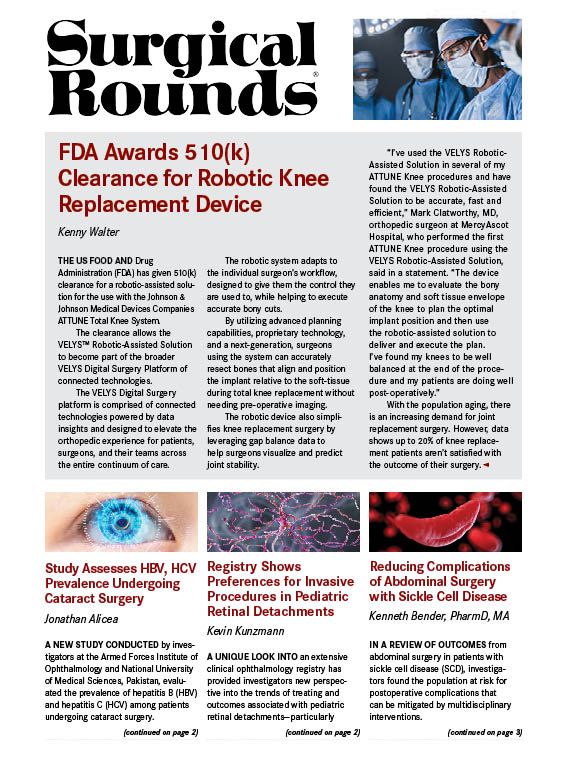Opioid-Sparing After Surgery May Be Viable Option
The excessive prescribing of opioids post-surgery increases risk of patient morbidity.
Maia Anderson, MD

A new study reported that patients on an opioid-sparing pathway post-surgery received and used fewer opioids, reported less pain, and indicated similar satisfaction compared with patients who received standard of care.
The study, led by Maia Anderson, MD, Department of Surgery, University of Michigan, used de-identified data to retrospectively compare opioid-naïve patients who participated in an opioid-sparing pathway after surgery with opioid-naïve patients who received standard of care for the same procedures.
“Although opioid-sparing postoperative pathways offer a novel approach to mitigate these risks, concerns about inferior pain control and patient satisfaction have hindered their adoption,” they wrote.
Nevertheless, they acknowledged that the excessive prescribing of opioids after surgey can increase risk of patient morbidity and may further have adverse effects within communities.
Evaluating Opioid-Sparing and Patient Satisfaction
Their analysis included patients who underwent laparoscopic cholecystectomy, hernia repair, or thyroidectomy between August 1, 2018-December 31, 2019.
Those in the opioid-sparing pathway (n = 310) received preoperative counseling to use scheduled acetaminophen and ibuprofen for 1 week after surgery. Following their operation, they then received prescriptions for those medications as well as a small prescription of 4-10 oxycodone 5-mg tablet.
Standard of care was administered at the discretion of the surgeon. Anderson and colleagues gathered a numerically- and qualitatively-matched sample from the Michigan Surgical Quality Collaborative.
Patients in both groups had been contacted 30-90 days post-operation to complete patient-reported outcome surveys.
Thus, in the opioid-sparing pathway, 36.8% of patients did not receive an opioid prescription—compared with 0% in the standard of group.
The team also noted no differences in patient satisfaction, regret to undergo surgery, or quality of life between the groups. Even more, these findings were notably consistent across procedures.
“Similar satisfaction despite differing pain scores may be explained by the influence of other unmeasured factors on overall satisfaction,” the team of investigators wrote.
“Importantly, more patients in the opioid-sparing group received no opioid prescription, which avoids the risk of diversion into communities,” they continued.
The team acknowledged that the study was limited by its retrospective design, lack of intraoperative analgesic data, and its exclusion of patients using prescription opioids prior to surgery.
“Future work is needed to investigate whether patients can recover without opioids after other operations, and whether this strategy can be adapted for patients with preoperative opioid use,” they noted.
“Expanding this approach may be an effective way to combat opioid-related morbidity without negatively affecting the patient experience.”
The research letter, “Patient-Reported Outcomes After Opioid-Sparing Surgery Compared With Standard of Care,” was published online in JAMA Surgery.
